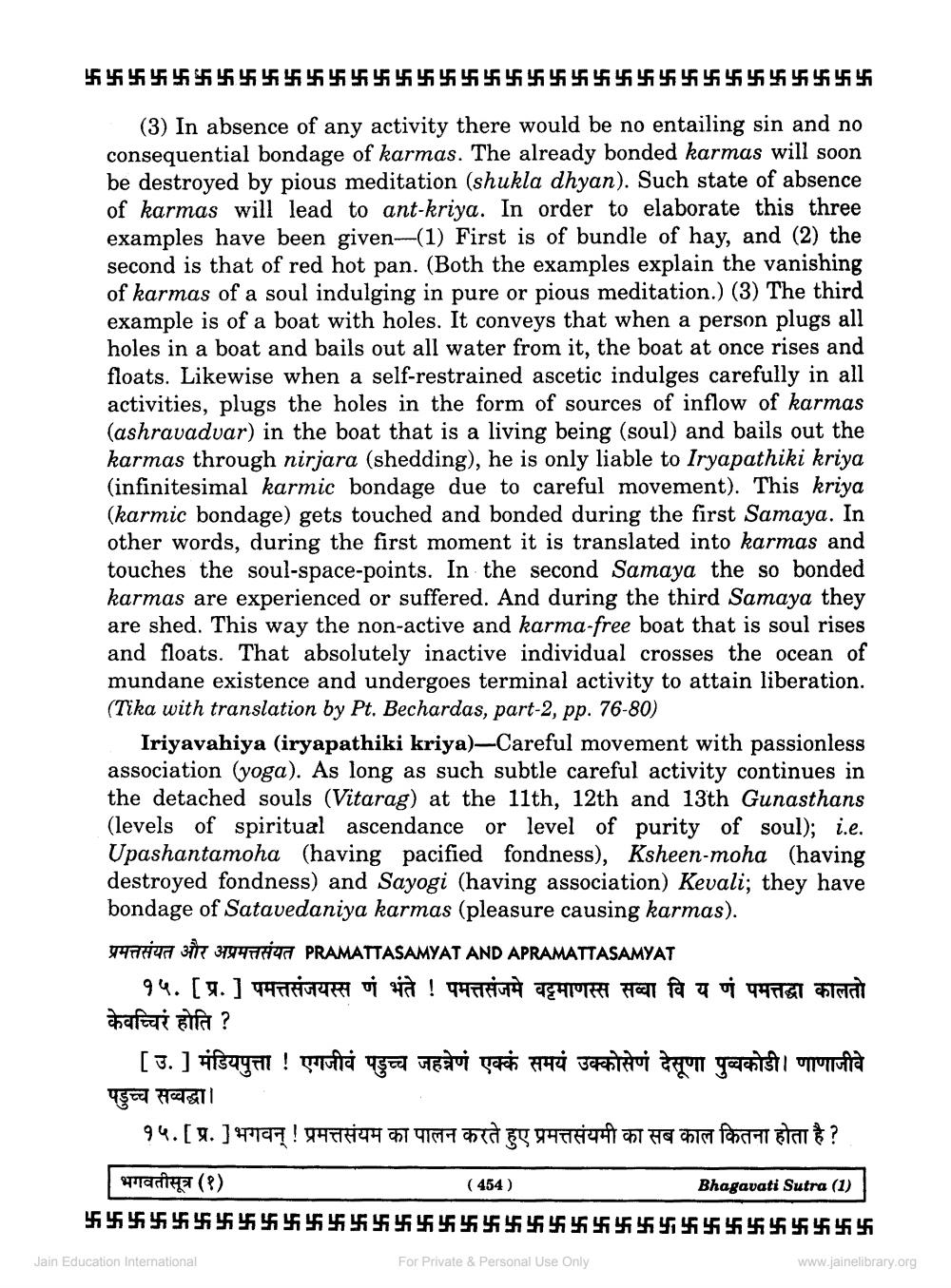________________
55555555555555555555555555555555555
(3) In absence of any activity there would be no entailing sin and no consequential bondage of karmas. The already bonded karmas will soon be destroyed by pious meditation (shukla dhyan). Such state of absence of karmas will lead to ant-kriya. In order to elaborate this three examples have been given-(1) First is of bundle of hay, and (2) the second is that of red hot pan. (Both the examples explain the vanishing of karmas of a soul indulging in pure or pious meditation.) (3) The third example is of a boat with holes. It conveys that when a person plugs all holes in a boat and bails out all water from it, the boat at once rises and floats. Likewise when a self-restrained ascetic indulges carefully in all activities, plugs the holes in the form of sources of inflow of karmas (ashravadvar) in the boat that is a living being (soul) and bails out the karmas through nirjara (shedding), he is only liable to Iryapathiki kriya (infinitesimal karmic bondage due to careful movement). This kriya (karmic bondage) gets touched and bonded during the first Samaya. In other words, during the first moment it is translated into karmas and touches the soul-space-points. In the second Samaya the so bonded karmas are experienced or suffered. And during the third Samaya they are shed. This way the non-active and karma-free boat that is soul rises and floats. That absolutely inactive individual crosses the ocean of mundane existence and undergoes terminal activity to attain liberation. (Tika with translation by Pt. Bechardas, part-2, pp. 76-80)
Iriyavahiya (iryapathiki kriya)-Careful movement with passionless association (yoga). As long as such subtle careful activity continues in the detached souls (Vitarag) at the 11th, 12th and 13th Gunasthans (levels of spiritual ascendance or level of purity of soul); i.e. Upashantamoha (having pacified fondness), Ksheen-moha (having destroyed fondness) and Sayogi (having association) Kevali; they have bondage of Satavedaniya karmas (pleasure causing karmas).
प्रमत्तसंयत और अप्रमत्तसंयत PRAMATTASAMYAT AND APRAMATTASAMYAT
१५. [.] पमत्तसंजयस्स णं भंते ! पमत्तसंजमे वट्टमाणस्स सव्वा वि य णं पमत्तद्धा कालतो ahaferi alfa?
[ उ. ] मंडियपुत्ता ! एगजीवं पडुच्च जहन्त्रेणं एक्कं समयं उक्कोसेणं देसूणा पुव्यकोडी । णाणाजीवे पडुच्च सव्वद्धा ।
१५. [ प्र. ] भगवन् ! प्रमत्तसंयम का पालन करते हुए प्रमत्तसंयमी का सब काल कितना होता है ?
भगवतीसूत्र (१)
(454)
Jain Education International
5555555555555555555555555555555
Bhagavati Sutra (1)
For Private & Personal Use Only
www.jainelibrary.org




